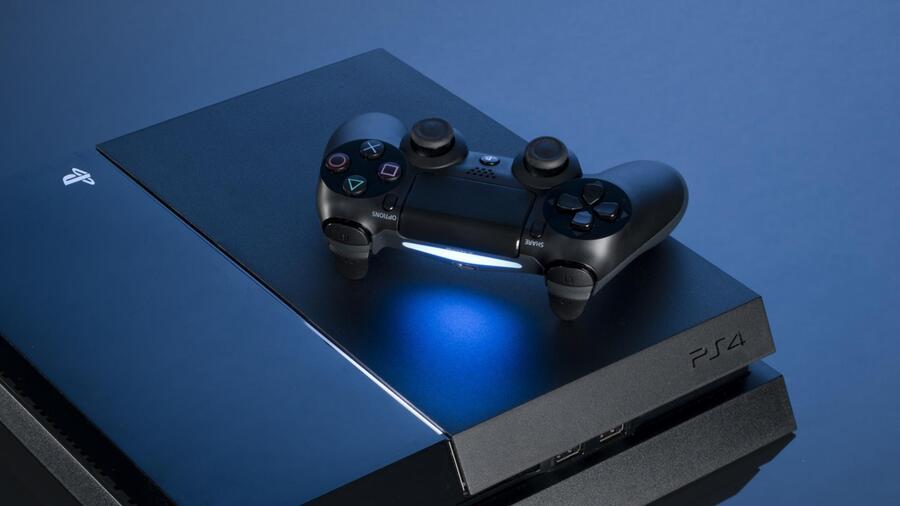The Biggest Trends of the PS4 Generation – Feature


Six years have passed since the PlayStation 4 launched, and even the most optimistic PlayStation fan may not have anticipated how good the generation was going to be.
The PS4 has been home to an incredible array of console exclusives, and while there have been some stumbles along the way with things like cross-play, there are plenty of reasons to be cheerful.
But what of gaming as a whole? The games industry has changed, and with it so have our expectations. Where once we scoffed at paying out for items like horse armour, today millions will hand over their hard-earned cash for a Fortnite backpack or weapon skin. While games have received patches and updates since the PlayStation 3, we’re now often pleasantly surprised at how releases become almost unrecognisable, with changes plotted out on development roadmaps months in advance.

Join us as we take a look at how many new phrases have entered our gaming lexicon over the past six years. Some are positive, and some less popular, but all arguably offer the same significance for the platform (and other platforms for that matter), as any game release.
For the last couple of generations, video games have remained the same price. While the PS3 generation saw the rise of the indie game, and allowed some experimentation in the range of pricing available, in this generation developers have sought more consistent income from titles. After all, if someone buys a game for £50 and then trades it in, there’s simply no more money to be made from it.
Enter the “games as a service” model, which sees games getting seemingly constant updates to keep players engaged (and spending money). Coming into the generation, EA had already seen impressive numbers from the Ultimate Team mode they’d begun adding to sports games (itself a patched-in game mode), but it was Activision that arguably showed how lucrative the cycle could be.

Destiny launched in 2014 as a full-priced title, and was followed by three expansions within the first year. To play the entirety of Destiny, players had to spend upwards of £120 — not including micro-transactions (more on those later). Since Destiny’s success, many teams have looked to snatch a piece of this “shared-world shooter” pie.
Ubisoft’s The Division and its sequel have arguably come closest (even with the visual downgrade controversies of the first game back in 2014 — remember that?), while Anthem has completely botched the idea, but there’s clearly a market for multiplayer-focused games that lean on progression systems that encourage grinding. Destiny 2 has recently begun to label itself as an MMO, which begs the question — how far are we from monthly subscription fees?
Sticking with the theme of monetisation, this generation plenty of developers opted to release games for free, nada, zilch. The idea being that these would be support by micro-transactions, payments made for small in-game boosts (a la mobile gaming, often referred to as pay-to-win), or additional cosmetic options.

While many floundered, many of these free-to-play titles became household names. Smite, a third-person MOBA, carved it’s own niche, as did Warframe — a perfect example of a game being essentially rebooted post-launch, having been available on the PS4 since day one.
We’re deliberately avoiding the obvious free-to-play elephant in the room here as we’re saving it for later, but the new avenues for monetisation didn’t stop with the micro-transactions.
Loot boxes became a key part of the gaming vernacular this generation, for better and for worse. Another concept with roots in mobile gaming and also firmly rooted in the aforementioned free-to-play market. These “surprise mechanics” (you can thank EA for that term) essentially equate to random booster packs of in-game items.
Games like Blizzard’s popular hero-shooter Overwatch keep themselves in gamers’ good graces by divorcing these unlocks from gameplay, keeping their effects to superficial personalisation options. Purchasing loot boxes help the developers continue to add content like maps and modes, and offers something extra for fans to add to their experience — usually from an “in-game store”, something also fairly fresh to this console generation.

EA attempted to take random drops in a different direction, perhaps spurred on by FIFA’s Ultimate Team packs (and its sports game competitor 2K also finding some success of its own), and it reached its zenith with Star Wars Battlefront 2. The story is likely to be used as a cautionary tale for years to come, but boils down to adding bonuses for players that shelled out more money — or at least it would’ve had outcry over the EA Access version of the game causing EA to pull the system at the eleventh hour (and allegedly incurring the wrath of Disney in the process).
Wait, EA Access? Subscription services have become part of gaming today, in all sorts of ways. EA Access offers trials of the publisher’s games before launch for just £20 per year, while Sony and Microsoft both offer their own versions of “all you can play” libraries for a monthly fee. Sony even allows you to stream an entire backlog of content, which still feels a little bit like magic — and streaming games could be even more important next generation.
At the intersection of free-to-play and games-as-a-service, comes the Battle Royale genre. PlayerUnknown’s Battlegrounds may have popularised the genre on PC, but Fortnite took things to a stratospheric new level.

This spin-off of a long-gestating co-op title turned the previously po-faced subgenre of battle royale into a colourful, zany, and impressively generous free-to-play title that continues to be enjoyed by millions worldwide.
A big part of this is down to the Battle Pass, a fresh approach to monetisation that incentivises players to complete challenges to earn items they’d otherwise have paid extra for. It’s an approach that has since been pinched by “new kid on the block” Apex Legends, as well as Destiny 2 and plenty of others.
Despite the backlash to Diablo 3’s initial PC launch being “always-online” (and Microsoft’s muddled messaging about online check-ins and so forth), plenty of games are still inaccessible offline — even if you just want to play solo. The much derided Ghost Recon: Breakpoint is one, while Death Stranding players will miss out on a lot of the fun of the game without being online (although arguably that’s not too surprising when the theme of the game is “connection”).

This may all sound a bit doom and gloom, but there’s plenty of fresh ideas that inarguably improve the experience of playing games. While Sony was slow to adopt cross-play, we’re glad it did — being able to play across multiple platforms felt like a pipe dream, but after the breakthrough successes of Fortnite and Rocket League, this year’s Call of Duty: Modern Warfare offering the feature at launch felt like a huge moment for the industry. Tied in with Destiny 2 and Fortnite’s cross-progression system, and we’re approaching the “play wherever you want” future that many platform agnostic gamers have dreamt of for years.
Here’s a fun exercise to close this article. If you read back, you’ll note many of the additions made to our gaming glossary this generation are marked in bold. Total them up, and let us know how many of them you’d encountered before the PS4 generation in the comments below. There’s arguably no defining trend of the console generation because so many of them seemed to begin, or reach mainstream awareness, over the last six years.
As we approach the PlayStation 5, it’s time to look ahead to what new things developers and publishers are going to try. Gamers have traditionally been somewhat resistant to change, but this generation has shown that there’s room for plenty of experimentation.
[ad_2]
Source link





